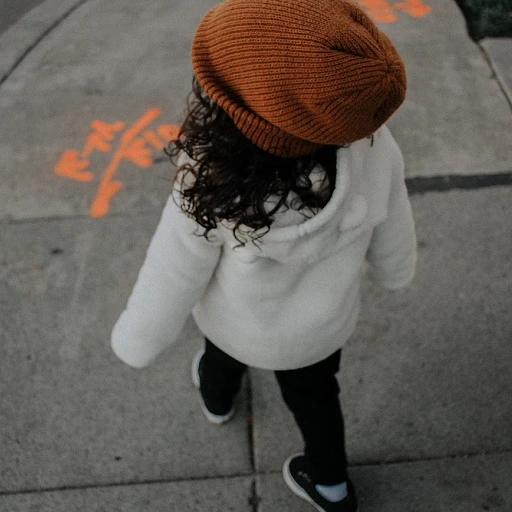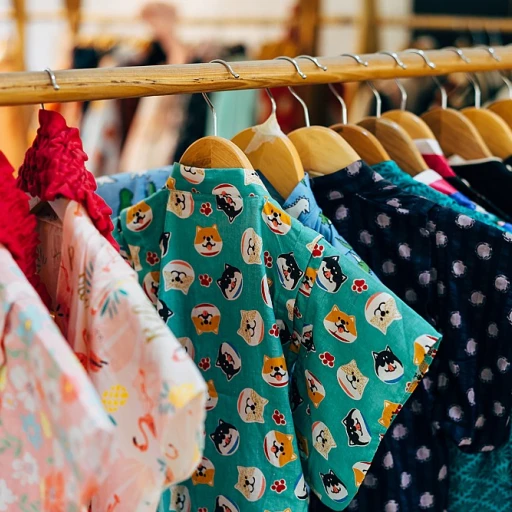
Understanding Sensory Sensitivities in Kids
Recognizing Individual Needs in Children's Fashion
Understanding sensory sensitivities in kids is pivotal for crafting outfits that bring comfort and joy. Sensory sensitivities can manifest in various ways, where children may have heightened reactions to textures, tags, seams, and more. For parents seeking solutions, knowledge about these sensitivities is fundamental to their kids' fashion choices. This is especially relevant during seasonal transitions such as winter to spring, when clothing layers and textures change.
Sensory sensitivities require adaptive clothing solutions that prioritize comfort without compromising style. This includes soft, tagless fabrics and accessible clothing options that promote independence for growing children. If you're navigating the world of transitional outfits, it might be beneficial to explore a comprehensive guide to kids' fashion focused on seasonal transitions.
By acknowledging these unique needs, parents not only ensure their child’s comfort but also instill confidence and self-expression through tailored wardrobe choices. These considerations are integral to finding and styling adaptive wardrobes for children, offering a seamless blend of comfort and aesthetics.
Key Features of Adaptive Clothing
Exploring Essential Features for Comfort
When it comes to adaptive clothing, the focus is on merging style with functionality, particularly for kids with sensory sensitivities. These garments are more than just clothes; they're designed to ensure comfort, freedom of movement, and a better dressing experience.- Soft, Breathable Fabrics: The right fabric can make a world of difference. Look for materials that are soft, breathable, and kind to the skin. Cotton and bamboo are excellent choices, reducing irritation and allowing for all-day comfort.
- Flat Seams and Tags: Tags and seams might seem insignificant to some, but they can be quite bothersome for kids sensitive to touch. Opt for clothing with flat seams and tagless designs to eliminate such discomfort.
- Easy Fastenings: Buttons and zippers can be tricky; hence, adaptive clothing often features Velcro or magnetic closures. These adaptations empower children to dress independently, fostering confidence and autonomy.
- Adjustable Features: Elastic waists and adjustable straps ensure that garbs can grow with your child, offering both flexibility and prolonged use.
Winter-to-Spring Transition Essentials
Essential Pieces for the Seasonal Shift
As the chill of winter gives way to the gentle warmth of spring, dressing children with sensory sensitivities requires thoughtful consideration. The transition from winter to spring can be tricky, but with the right adaptive clothing, it becomes a breeze. Here are some essentials to keep in mind:
- Layering Basics: Start with a compression shirt that provides proprioceptive input, helping regulate the child's sensory needs. Long sleeve shirts made from soft, breathable materials like nylon spandex are ideal for maintaining comfort.
- Water-Resistant Outerwear: A lightweight, water-resistant jacket is crucial for those unpredictable spring showers. Look for options with elastic cuffs and easy-to-use zippers to minimize sensory discomfort.
- Comfortable Bottoms: Choose pants with elastic waistbands that offer flexibility and ease of movement. Adaptive clothing brands often provide sensory-friendly options that cater to children with autism and other sensory needs.
- Footwear Considerations: Opt for shoes that are easy to put on and take off, with adjustable straps or elastic laces. This not only aids in independence but also ensures a snug fit without causing discomfort.
By focusing on these key pieces, parents can ensure their children are comfortable and stylish during the seasonal transition. Remember, the goal is to provide clothing that supports the child's sensory input needs while allowing them to express their unique style.
Top Brands Offering Adaptive Kids' Fashion
Leading Brands in Sensory-Friendly Kids' Fashion
When it comes to combining comfort, style, and sensory needs, several brands have stepped up to offer adaptive clothing solutions for kids. These brands focus on providing garments that align with the understanding of sensory sensitivities, ensuring kids can express themselves fashionably without discomfort.- Hanna Andersson: Known for their super-soft fabrics and tagless clothing, Hanna Andersson garments are a favorite among parents. They provide seamless options that reduce irritation, making them perfect for sensory-sensitive children.
- Primary: This brand emphasizes simplicity and versatility. Their clothing collections focus on solid colors and basic designs, which can reduce overwhelm for children with sensory processing challenges.
- Kozie Clothes: Designed by an occupational therapist, Kozie Clothes offers sensory-friendly apparel with features like flat seams and soft fabrics. Their collection includes items especially crafted to address the needs of children with autism and other sensory disorders.
- Target's Cat & Jack Line: Cat & Jack is committed to inclusion and offers an adaptive line that includes tag-free garments and easy-to-dress features. This accessible and affordable option has gained popularity among many families.
Styling Tips for Sensory-Friendly Outfits
Creating Comfy Looks for Sensitive Little Ones
When it comes to crafting outfits for kids with sensory sensitivities, a delicate balance between style and comfort is key. The transition from winter to spring demands a thoughtful approach, as fluctuating temperatures and varying sensory inputs can affect a child's comfort. Considering the unique needs of sensory-sensitive children, here are some styling tips to help you create outfits they will love and cherish.
- Layer Wisely: Use soft, breathable layers to accommodate temperature changes. Opt for seamless tees and tagless tops that will feel gentle against their skin.
- Mind the Materials: Look for natural fabrics like cotton or bamboo that are celebrated for their lightweight and non-irritating qualities. Avoid scratchy or rough textures that might cause discomfort.
- Accessorize Carefully: Choose accessories that are as sensory-friendly as the clothing itself. Hats with gentle linings and easy-to-use fasteners can protect without causing irritation.
- Shoe Selection: Find shoes that offer cushioned support and breathable materials. Opt for those with easy fastenings, such as Velcro or slip-ons, to cater to kids with fine motor challenges.
- Pops of Personalization: Encourage kids to add their personality to outfits through playful colors and patterns. This can help them feel more confident and comfortable in their fashion choices.
By carefully selecting adaptive pieces and styling them with attention to detail, you can create sensory-friendly outfits that transition beautifully from winter to spring, ensuring every child feels both stylish and comfortable.
Parental Insights and Experiences
Real-Life Experiences from Parents
Parents of children with sensory sensitivities often share invaluable insights into the world of adaptive clothing. Many have found that the right clothing can make a significant difference in their child's daily life. For instance, a compression shirt can provide the proprioceptive input that helps regulate a child's sensory needs, offering a comforting hug-like sensation that many children find soothing.
One parent shared how switching to kozie clothes with nylon spandex material helped their child with autism feel more at ease. The elastic nature of these clothes allows for easy movement, which is crucial for children who are constantly on the go. The long sleeve options are particularly favored during transitional seasons, providing warmth without overwhelming the senses.
Balancing Comfort and Style
Finding the right balance between comfort and style is a common challenge. Parents often look for sensory-friendly clothing that doesn't compromise on aesthetics. Adaptive clothing with features like water-resistant materials or compression elements can be both functional and fashionable. These pieces are designed to accommodate the unique needs of children with sensory sensitivities, ensuring they feel comfortable and confident.
Parents also emphasize the importance of unit price when selecting clothing. While some adaptive options may come at a higher price, many find the investment worthwhile for the comfort and ease they provide. Brands like Kozie offer a range of options that cater to both kids and adults, making it easier for families to find suitable clothing for everyone.
Community Support and Resources
Connecting with other parents and sharing experiences can be incredibly helpful. Many parents turn to online communities and forums to exchange tips and recommendations on the best adaptive clothing options. These platforms often provide a wealth of information on how to dress children with sensory sensitivities, from choosing the right shirt to understanding the benefits of sensory compression.
Ultimately, the journey to finding the perfect wardrobe for a child with sensory sensitivities is unique to each family. However, with the right resources and support, parents can help their children navigate the world of fashion with ease and confidence.





